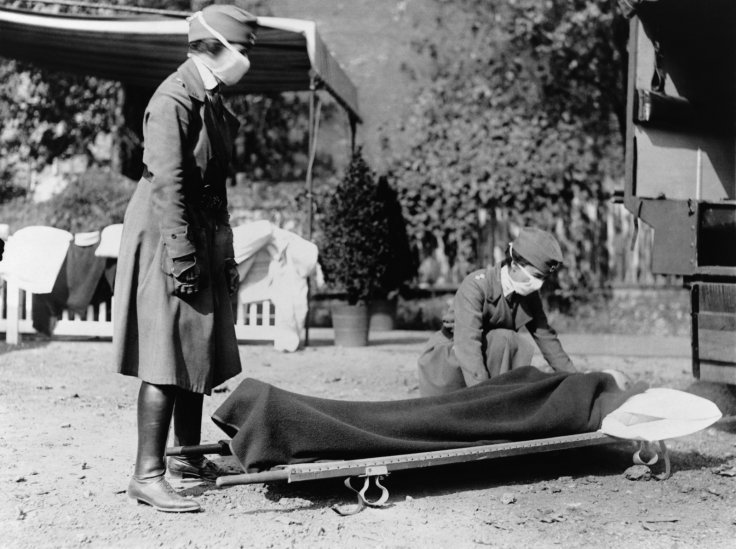The Novel Coronavirus has infected 554 and killed 24 people so far in the US but this is not the worst-case scenario that the Americans had faced as they witnessed a severe pandemic in 1918 that killed 675,000 individuals just in the US alone and 50 to 100 million people worldwide, called Spanish flu.
After the 1918 Spanish flu outbreak, the world governments changed their approach to the healthcare system. Though the current COVID-19 has not reached to a pandemic stage, a new question that is posed by many experts is whether this new emergency situation will change the perception of global health care in view of the vulnerability of every group.
What happened in 1918 pandemic?
The influenza pandemic in 1918 was the most severe pandemic in recent world history which was caused by an H1N1 virus with genes of avian origin. There is no universal consensus regarding where the virus originated but it had spread worldwide. In US, the flu was first identified in military personnel during the spring of 1918.
As per the records, the virus infected about 500 million people in the world, which is one-third of the world's population. The number of deaths caused by the pandemic was estimated to be at least 50 million globally while in the US the virus killed 675,000 people.

An American author, John M Barry who wrote a book on 1918 pandemic, told CBS during an interview that "there was a mild spring wave that was hit-or-miss. It came back in the fall with more than vengeance. Probably 60-70% percent of the deaths actually occurred in an incredibly short time of probably about 14 or 15 weeks, from late September 1918 through December, maybe a little into January."
Here it should be mentioned that in fall 1918, Philadelphia went ahead with a huge war bond parade at the time when the Spanish flu was at its most virulent. In addition, Barry said almost 48 hours later influenza exploded around the city in Pennsylvania and the "the result is, it's one of the hardest-hit cities in the world, and the mass graves being dug by steam shovels and so forth."
Isn't the Novel Coronavirus different from 1918 Spanish flu?
Yes, flu and COVID-19 are two different diseases, but they have a few things in common such as both are respiratory diseases, spread through breath and handshake of an infected person as well as touching any host surface.
Both flu and the novel Coronavirus are caused by viruses and highly contagious. While the current outbreak kills a considerably higher proportion of those it infects, compared to seasonal flu, there is no clarity on how it measures up in terms of lethality, to pandemic flu-like 1918 Spanish flu. These two diseases are called "crowd diseases", as these can spread easily in crowded places.

What have we learnt from 1918 disaster?
Experts believe that less privileged people tend to be the worst victims of such epidemic and less developed countries witness massive wiping out of populations. The best example was India, where the 1918 Spanish flu killed 18 million people, the highest death toll compared to any other nation.
As per the reports, while the virus was a relatively new concept in 1918, the healthcare was much more fragmented then. In the industrialized countries, most of the doctors used to work for themselves or were funded by religious institutions. Many people did not have access to reach out to these doctors.
When the 1918 flu arrived, the medics had no reliable diagnostic test, no effective vaccine, no drug or antibiotics. Even the doctors weren't obliged to report cases to the authorities, which means that people failed to see the emerging pandemic in 1918.
After the Spanish flu pandemic that could not treat patients following the isolation or quarantine process, the nations saw the reason to strengthen the healthcare system. Russia became the first country to establish a centralized public healthcare system, which was funded entirely by a state-run insurance scheme.
Later, Germany, France and UK eventually followed the same path, while US took a different way and started employer-based insurance schemes. All these countries changed their perspective to deal with such catastrophic situation and took steps to consolidate healthcare. Many countries created or revamped health ministries in the 1920s.
In Vienna, an international bureau for fighting epidemics started functioning in 1919 along with today's World Health Organization (WHO).Since the COVID-19 is taking the proportion of a global pandemic, the countries and WHO have to rethink their approach.
For now, the US has already started discussing the costs and availability of COVID-19 test kits, while India is still reckoning the impact.









